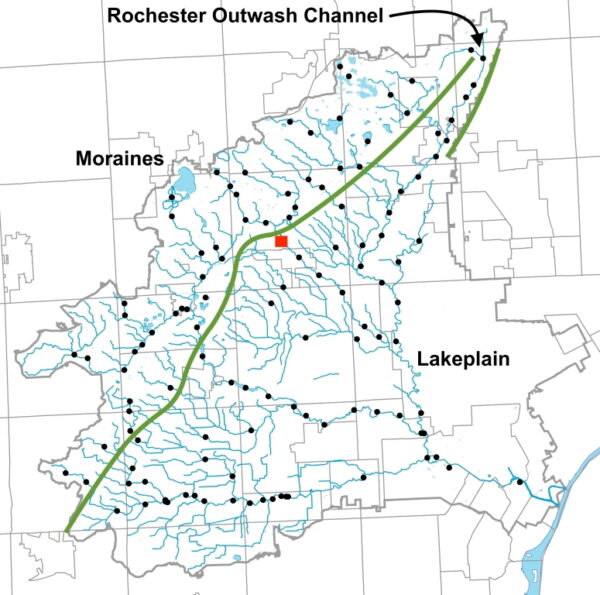Lampetra appendix

American Brook Lamprey
Unlike the notorious sea lamprey that invaded the Great Lakes and devastated the fish community, the American brook lamprey is a small native fish that spends most of its life buried in the sediment and does not parasitize other fish. There are five native lampreys in the Great Lakes and two never become parasitic.
The American brook lamprey spends most of its life as a snake-like larvae called an ammocoete. Lacking usable eyes, the ammocoete has seven rounded gill slits, one nostril and a horseshoe-shaped hood rather than a mouth. Burying their bodies in the soft sediment bottom of the stream, they stick their head into the water column and filter feed out the detritus, their main food source. The ammocoetes metamorphoze in 4.5 or more years into adults. Their filter hood becomes a suction disc with poorly developed teeth, they develop eyes and grow small dorsal and caudal fins. Unlike parasitic lamprey, the adults do not feed at all and even shrink in size. Instead, they use their disc mouth to hold onto rocks and in breeding, never for parasitizing. During spawning, the main purpose of the adult stage, females build a nest and attach to a rock with their disc mouth at the upstream end. The male lamprey attaches to the female’s head with his disc mouth, wraps his tail around her body and they vibrate vigorously, releasing and burying fertilized gametes in the streambed. As many as 1600 eggs are laid. Eggs hatch in 20-22 days. Adults provide no care for the hatching ammoecetes, dying soon after spawning.
Although American brook lamprey are a species of “least concern” on the IUCN Red List, their populations have been reduced and eliminated from many streams due to habitat alteration and they are listed as threatened or vulnerable in several states. They were once commonly sold as bait in Canada. American brook lamprey require cool, clear, medium sized streams with sand or gravel, making their presence an indication of a healthy stream. They have been found at a single location in the Rouge River watershed, first encountered by a Friends of the Rouge Bug Hunt Team Leader during a Fall Bug Hunt.
American Brook Lamprey Distribution

black dots = sampling sites; red blocks = species present
Categories
-
Our WorkShort description about the category for context.